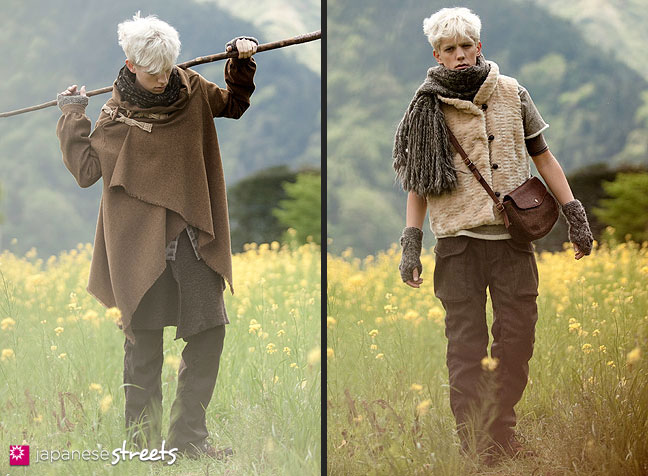The first part of the course where we looked at lantern slides
and discussed the role of semiotics in these photos was very interesting. My first
“real” look into the history of Japan was mostly through photos like this. I
had taken for granted that they were showing the “truth” when they were actually
still showing the opinion of someone else.
The
unit where we covered Tanizaki and In
Praise of Shadows was also very interesting. This was something that
further helped me to see how every group also creates "myths" around
themselves as well as around others.
At the beginning of this unit, I would not have considered
this to be “high-class art,” but now I definitely acknowledge that it is. It
was sad, yet enlightening to see how much Western influence dictates our
conceptions of “reality.” Within this unit, it was also interesting to see how Japanese
artists made critiques of Japan as well as the world in general. This was one
of my favorite works of art.
This is a design by Yamamoto Yoji. I really liked this unit
because it further gave me insight to the world of design. It took me a while
to realize that this is also a form of art and still carries meaning.
This is probably one of the images that stuck with me the
most. Thinking back, maybe it is because we rarely see bodies in the open-they
are usually covered or the picture is taken from an angle that prevents us from
either truly knowing whether or not the person is alive or we see little more
than the body for its parts- focusing on limbs. There was a video posted to the
visual culture blog on a photojournalist who went to Fukushima following the
disaster. Before this image was shown on screen he made a comment that the
Japanese government had made sure that the streets within towns at least looked
“clean”-that there were no visible bodies. The journalist said that he only had
to walk about 30 seconds off the main road in order to find this man. What
shocks me the most about this picture is that even though the man is not facing
us, so that we could determine whether or not he is dead, there is no question
that he is deceased.










 .
.


